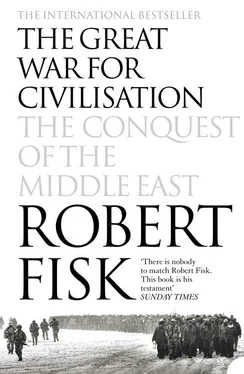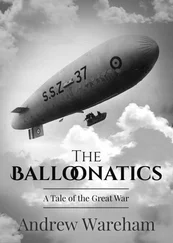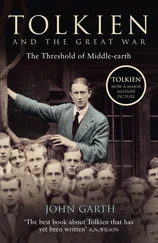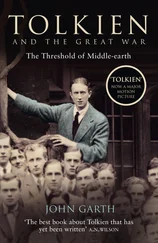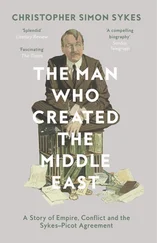When the Islamic revolution eventually overflowed Iran, we would often wonder at the Iranian capacity for both cruelty and sensitivity, for sudden anger and immense, long and exhausting intellectual application. In a country of violent history, its public squares were filled with statues of poets – Ferdowsi, Hafiz, Saadi – rather than conquerors, although the Shah and his father naturally occupied some substantial plinths. An Arab politician once compared Iranian persistence in adversity to the country’s craft of carpet-weaving. ‘Imagine that one carpet, worked on by scores of people, takes about ten years to complete. A people who spend years in manufacturing just a single carpet will wait many more years to achieve victory in war. Do not take lightly the patience and perseverance of the Iranians …’
And so it was to be. Khomeini moved his exile from Turkey to the Shia holy city of Najaf in Saddam Hussein’s Iraq, where he became outspoken in his support of the Palestinians. On clandestine tapes, his sermons were now circulated across Iran. Saddam Hussein had secured an agreement with the Shah that settled their mutual border along the centre of the Shatt al-Arab river on the Gulf and which also smothered the Kurdish insurrection in the north of Iraq, a betrayal at which both US Secretary of State Henry Kissinger and the Shah connived. When the Shah was unable to stanch the cassette sermons, Saddam was enjoined to deport Khomeini. This time he settled in Neauphle-le-Château outside Paris, where he was assured of the constant, almost fawning admiration of the international press, an institution for which he was later to show his contempt.
When the political earthquake eventually struck Iran, The Times was enduring a long industrial closure. It is the fate of journalists to be in the right place at the right time and, more frequently, in the wrong place at the wrong time. But to be in the right place without a newspaper to write for was journalistic hell. When I should have been reporting the martyrdom of tens of thousands of Iranians at the hands of the Shah’s Javidan Guards – the ‘Immortals’ – I was resigning from the National Union of Journalists who were, for all kinds of worthy socialist reasons, opposing the paper’s philanthropic owner Lord Thomson in his dispute with his printers over new technology; the union ultimately trussed up The Times for sale to Rupert Murdoch. But the Canadian Broadcasting Corporation came to my rescue with a request for me to cover the Iranian revolution for a half-hour radio documentary. I packed the big tape recorder that CBC gave its reporters in those days – this was long before digitalisation – and a bag of cassettes and a notebook in case I could find a newspaper to print my reports.
The fall of the Shah was an epic. His downfall had about it something of a medieval morality play, even ancient tragedy. It might have qualified as Greek if the Shah had been a truly great man who fell from grace through a single flaw. But he was not a great man and his sins were many. Hubris was perhaps his greatest crime, although the Iranians saw things somewhat differently. Yet they sensed this mythic element in their revolution even before the King of Kings piloted his personal Boeing airliner out of Mehrabad airport for the last time on 16 January 1979.
One of the most impressive of the revolutionary posters depicted the Shah in his full regalia, crown toppling from his balding head, hurtling towards the everlasting bonfire as the avenging Ayatollah swept above him on wings of gold. If ever a Middle Eastern potentate was so frequently portrayed as the Devil, surely never in Islamic art did a living human – Khomeini – so closely resemble the form of the Deity. Tramping through the snow-swamped streets of Tehran, I was stopped by a schoolboy outside the gates of Tehran University who wanted, for a few riyals, to sell me a remarkable example of post-revolutionary graphic art. It was a cardboard face-mask of the Shah, his jowls slack and diseased, his crown kept in place only by two massive black horns. Push out the detachable cardboard eyes, place the mask over your own face and you could peer through the Devil’s own image at the black chadors and serious-faced young men of central Tehran. The effect was curious; whenever a stroller purchased a mask – whenever I held it to my own face in the street – the young men would cry Marg ba Shah – ‘Death to the Shah’ – with a special intensity. It was as if the cardboard actually assumed the substance of the man; the Devil made flesh.
Khomeini had already returned from Paris, and his Islamic revolution initially seduced the more liberal of our journalistic brethren. Edward Mortimer, an equally beached Times journalist – a leader-writer on the paper and a fellow of All Souls, he was also a close friend – caught this false romanticism in its most embarrassing form in an article in the Spectator in which he favourably compared the revolution to both the 1789 fall of the Bastille and the 1917 overthrow of the Tsar. To Mortimer, Charles Fox’s welcome to the French revolution – ‘How much the greatest event it is that ever happened in the world! And how much the best!’ – seemed ‘entirely apposite’ in the Tehran household among whom he was listening to revolutionary songs broadcast from the newly captured headquarters of Iranian National Radio. The events in Iran, Mortimer wrote, ‘are a genuine popular revolutionin the fullest sense of the word: the most genuine, probably, since 1917 anywhere in the world, perhaps more genuinely popular than the Bolshevik revolution was, and quite possibly … no less far-reaching in its implications for the rest of the world … Khomeini has himself defied religious conservatism, and is therefore most unlikely to want to impose it on the rest of society.’
Now this was a journalism of awesome – one might even say suicidal – bravery. While I could not disagree with Edward’s remarks on the far-reaching implications of the Iranian revolution, his trust in Khomeini’s liberal intentions was born of faith rather than experience. Mossadeq’s downfall had demonstrated that only a revolution founded upon the blood of its enemies – as well as the blood of its own martyrs – would survive in Iran. Savak had been blamed for the cinema fire in Abadan in August 1978 in which 419 Iranians were burned alive; the Shah, his enemies claimed, wanted Muslim revolutionaries to be accused of the massacre. Each period of mourning had been followed by ever-larger protest demonstrations and ever-greater slaughter. Street marches in Tehran were more than a million strong. Revolutionary literature still claims that the Shah’s army killed 4,000 demonstrators in Jaleh Square in Tehran on 8 September. When Ayatollah Khomeini arrived back in Iran from Paris – the French, who had provided the wine for the Shah at Persepolis, provided Khomeini with the aircraft to fly him home – he was at once taken by helicopter to the cemetery of Behesht-i-Zahra. Four days later, on 5 February 1979, he announced a provisional government headed by Mehdi Bazargan. Iran might still become a democracy, but it would also be a necrocracy: government of, by and for the dead.
And once the martyrs of the revolution had been honoured, it was time for the Shah’s men to pay the price. Each morning in Tehran I would wake to a newspaper front page of condemned men, of Savak interrogators slumping before firing squads or twisting from gallows. By 9 March, there had been forty death sentences handed down by revolutionary courts. None of his 60,000 agents could save Nimatollah Nassiri, the head of Savak; grey-haired, naked and diminutive, he lay on a mortuary stretcher, a hole through the right side of his chest. This was the same Nassiri who had brought the Shah’s firman to Mossadeq to resign in 1953, the same Nassiri who had arranged the visits of Ben Gurion, Dayan and Rabin to Tehran. General Jaffar Qoli Sadri, Tehran’s chief of police – once head of the notorious Komiteh prison – was executed, along with Colonel Nasser Ghavami, the head of the Tehran bazaar police station, and a man accused of being one of Savak’s most savage torturers at Qasr prison, Captain Qassem Jahanpanar. All three had been sentenced in the evening and executed within twelve hours.
Читать дальше
